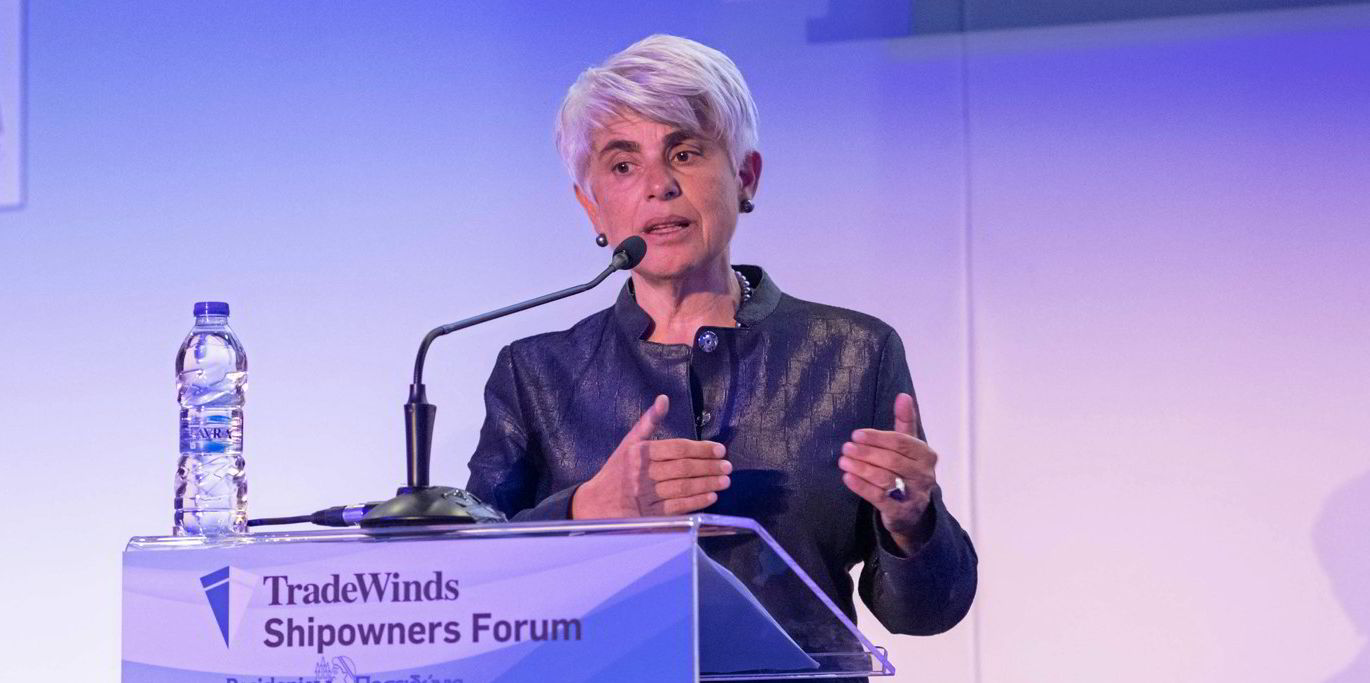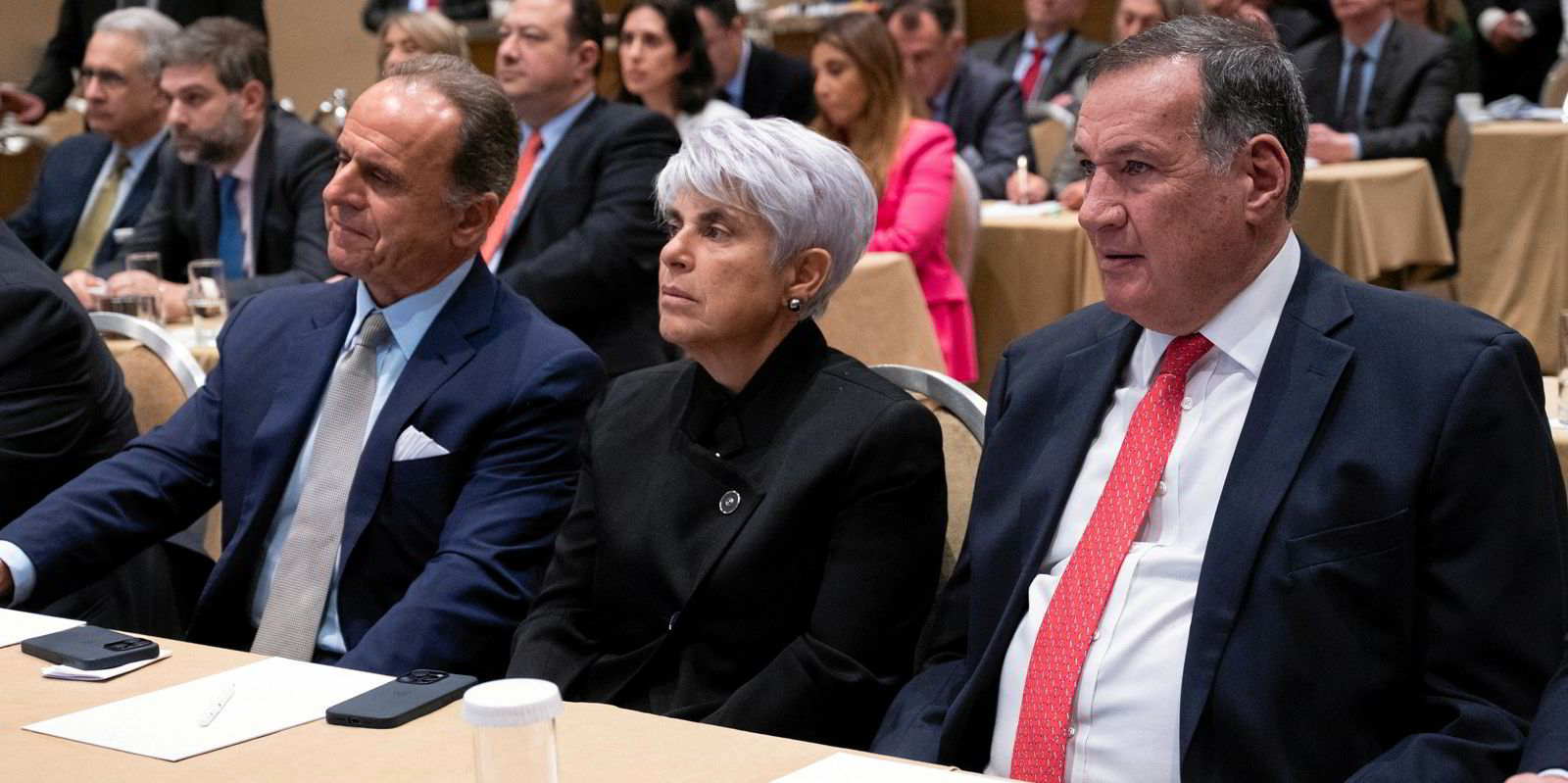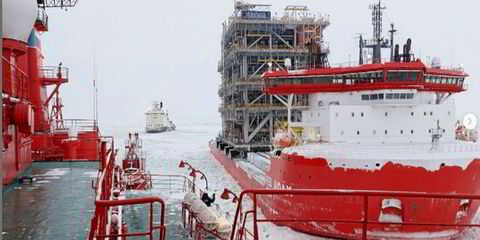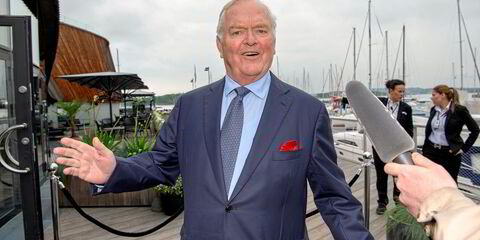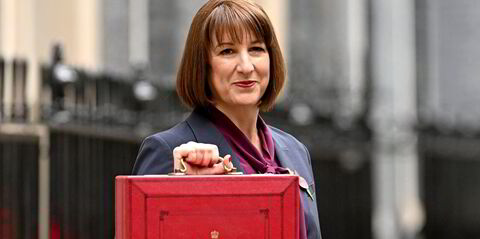Navios Maritime Partners sees potential opportunities to charter out or sell container ships as the crisis in the Red Sea lifts the sector amid an otherwise challenging backdrop.
Asked by an analyst about how liner operators’ interest in vessels is changing amid the market disruption and looming orderbook, chief executive Angeliki Frangou said that the Red Sea situation has had a positive impact on the boxship sector.
And she said that is happening at a time when New York-listed Navios has four vessels coming off term charters.
“This is a kind of an environment where we judge whether you can do a two-year charter and create a contracted revenue or a sale. This is the kind of opportunity that you will be looking [at],” she told Jefferies analyst Omar Nokta.
The comments came after Pireaus-headquartered Navios Partners, which also owns bulkers and tankers, reported net income of $132.4m in the fourth quarter of 2023, up from $118.3m in the same period of 2022, as TradeWinds reported earlier in the day.
The earnings report came as Houthi attacks in the Red Sea and Gulf of Aden continue to push liner operators, which are Navios Partners’ customers, to avoid the Suez Canal. After a cooling market brought freight rates back down to pre-pandemic levels last year, the Red Sea disruption’s longer tonne-miles and reduced market capacity have pushed rates back up.
Vice chairman Ted Petrone told analysts on Tuesday that the Shanghai Containerised Freight Index is up 150% from its September 2023 low.
That should translate into term charter rates.
Upward pressure for time-charter rates should remain for the duration of the Red Sea disruption.
On the sale-and-purchase market, VesselsValue’s container ship index has gained 6.6% in value over the last year.
However, Navios Partners executives made it clear that challenges remain in container ship market fundamentals.
“Continuing record fleet growth should eventually modify these gains and reverse costs when the Middle East conflict settles,” Petrone said.
And the container ship orderbook represents 23.6% of the global fleet on the water, where just 12.3% of vessels are 20 years old or more, he said.
“Supply and demand fundamentals remain challenged due to economic and geopolitical uncertainties in an elevated orderbook,” he said.
But he pointed out the Suez Canal route accounts for 34% of containers and 20% of boxships, leading liner operators to move ships around and creating inefficiencies that apply upward pressure during the crisis.
“They’ve got to figure out what ships are going to go where. It’s changing the landscape, and it looks to be with us for a while,” Petrone said.

